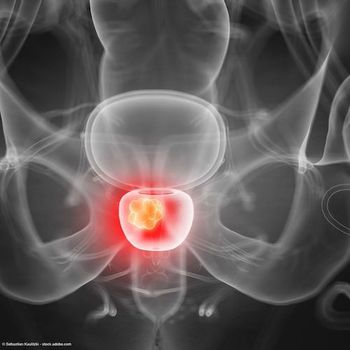
Findings support use of gemcitabine/docetaxel as alternative to BCG in IR-NMIBC
"In the setting of BCG shortages, our patients need alternatives that do not deprive them of the chance of cure," says Ashish M. Kamat, MD, MBBS.
Intravesical sequential gemcitabine and docetaxel showed similar efficacy to Bacillus Calmette-Guérin (BCG) in the treatment of patients with intermediate-risk (IR) non–muscle-invasive bladder cancer (NMIBC), supporting the use of this regimen as an alternative to BCG in this patient population.1
The findings were published in European Urology Oncology.
“[Although] BCG remains the most effective therapy for non–muscle-invasive bladder cancer, including intermediate-risk disease, in the setting of BCG shortages our patients need alternatives that do not deprive them of the chance of cure. In this setting, the results of our study showing equivalence of intravesical gemcitabine and docetaxel adds to the body of literature supporting this combination as a valid alternative to BCG,” said study author Ashish M. Kamat, MD, MBBS, in correspondence with Urology Times®. Kamat is a professor of urologic oncology and cancer research at the University of Texas MD Anderson Cancer Center in Houston, Texas.
For the study, investigators retrospectively reviewed outcomes among 182 patients with IR-NMIBC who were treated with BCG (n = 100) or intravesical sequential gemcitabine and docetaxel (n = 82) across 3 institutions. The median age of participants was 68 years.
No patients included in the study had a previous diagnosis of high-grade disease. Prior to induction, 54% of patients in the BCG cohort were likely to experience recurrent disease, compared with 84% among patients in the gemcitabine and docetaxel cohort (P < .001). Patients in the BCG cohort were also less likely to have a tumor of 3 cm or smaller (P = .044) and previous adjuvant intravesical treatment (P < .001). They were also more likely to have undergone a blue light cystoscopy (P = .016) and a single instillation of preoperative chemotherapy (P < .001).
The induction therapy was well tolerated among patients in both cohorts, with no significant difference between treatment types (P = .5). Median follow-up was 48.6 months among all patients.
Throughout follow-up, 37.9% of all patients experienced disease recurrence, 7.7% experienced any disease progression, and 2.2% experience progression to muscle-invasive disease or metastasis. The rate of mortality during follow-up was 22%, although only 1.7% was cancer specific.
When comparing patients treated with BCG to patients treated with gemcitabine and docetaxel, the data showed similar rates of recurrence among both patient cohorts (hazard ratio [HR] 1.06; 95% CI, 0.65–1.73; P = .8). The results remained consistent even after adjusting for International Bladder Cancer Group (IBCG) risk subgroups, the use of single-instillation postoperative chemotherapy, the use of blue light cystoscopy, and receipt of maintenance therapy (HR, 0.88; 95% CI, 0.47-1.64; P = .7).
The investigators also found similar rates of progression among both patient cohorts (HR, 0.66; 95% CI, 0.21-2.12; P = .5). The results also remained consistent after adjusting for IBCG risk subgroups (HR, 0.65; 95% CI, 0.20-2.10; P = .5).
The authors concluded, “We report that intravesical gemcitabine/docetaxel and BCG have comparable effectiveness in patients with IR-NMIBC. Our results support the use of gemcitabine/docetaxel as an alternative to BCG in patients with IR-NMIBC.”
Reference
1. Tan WS, McElree IM, Davaro F, et al. Sequential intravesical gemcitabine and docetaxel is an alternative to Bacillus Calmette-Guérin for the treatment of intermediate-risk non–muscle-invasive bladder cancer. Eur Urol Oncol. [Published online ahead of print July 18, 2023]. Accessed August 1, 2023. doi:10.1016/j.euo.2023.06.011
Newsletter
Stay current with the latest urology news and practice-changing insights — sign up now for the essential updates every urologist needs.




















